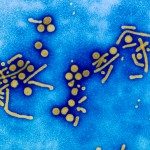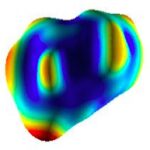Lien vers Pubmed [PMID] – 26863526
PLoS ONE 2016;11(2):e0148667
Human liver infection is a major cause of death worldwide, but fundamental studies on infectious diseases affecting humans have been hampered by the lack of robust experimental models that accurately reproduce pathogen-host interactions in an environment relevant for the human disease. In the case of liver infection, one consequence of this absence of relevant models is a lack of understanding of how pathogens cross the sinusoidal endothelial barrier and parenchyma. To fill that gap we elaborated human 3D liver in vitro models, composed of human liver sinusoidal endothelial cells (LSEC) and Huh-7 hepatoma cells as hepatocyte model, layered in a structure mimicking the hepatic sinusoid, which enable studies of key features of early steps of hepatic infection. Built with established cell lines and scaffold, these models provide a reproducible and easy-to-build cell culture approach of reduced complexity compared to animal models, while preserving higher physiological relevance compared to standard 2D systems. For proof-of-principle we challenged the models with two hepatotropic pathogens: the parasitic amoeba Entamoeba histolytica and hepatitis B virus (HBV). We constructed four distinct setups dedicated to investigating specific aspects of hepatic invasion: 1) pathogen 3D migration towards hepatocytes, 2) hepatocyte barrier crossing, 3) LSEC and subsequent hepatocyte crossing, and 4) quantification of human hepatic virus replication (HBV). Our methods comprise automated quantification of E. histolytica migration and hepatic cells layer crossing in the 3D liver models. Moreover, replication of HBV virus occurs in our virus infection 3D liver model, indicating that routine in vitro assays using HBV or others viruses can be performed in this easy-to-build but more physiological hepatic environment. These results illustrate that our new 3D liver infection models are simple but effective, enabling new investigations on infectious disease mechanisms. The better understanding of these mechanisms in a human-relevant environment could aid the discovery of drugs against pathogenic liver infection.






